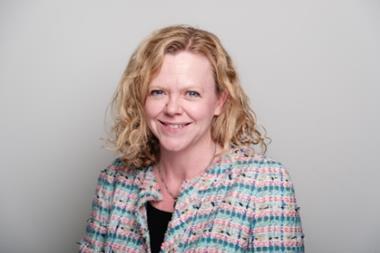A new wave of potential fraud has reared its ugly head, but is it as bad as first feared?
Last year saw a crippling surge in Cavity Wall Insulation (CWI) claims, some believe is the new target for claimant law firms as PPI claims come to an end.
As of September 2018, firms are not allowed to cold call households with regard to personal injury claims or PPI. And the deadline for PPI claims altogether is just a few months away, in August of this year.
Some have suggested that claims management companies (CMCs) will be jumping on the new Litigants in Person portal currently being built as part of the new Civil Liability Act which comes into effect in April next year.
Susan Brown, director at Medco, who is helping with the build of the portal, has said at a previous Insurance Times Fraud Charter meeting that more CMCs are trying to sign up to the portal, saying “it is growing exponentially, from one or two enquiries to people actually pushing to sign up.”
Brown also said that Medco is anticipating that CMCs “will become end-to-end users of the portal.”
Samantha Ramen, director of market and public affairs at Keoghs also said at that same Fraud Charter meeting: “CMCs will go where the money goes and where the system will allow them. I guess they are teeing up for it now as there is still a lot of uncertainty.”
Cavity Wall - a quick fix for CMCs?
But what will CMCs focus on in the months between August 2018 and April 2019?
To some, that lies at Cavity Wall Insulation.
According to The Cotswold Group, people living in specific areas, such as neighbourhoods where there was a large uptake of government grants, are already being targeted by cold callers.
Also, it says hotspots are typically on the west coast and places where there is high exposure to the south westerly driven wind and rain.
Richard Houseago, head of property, risks and coverage at Keoghs said insurers are “certainly seeing a spike in these claims and considerable time is being devoted to the necessary investigations in respect of each claim.”
He also said: “There is certainly a suggestion that there has been widespread claims farming and aggressive sign up campaigns. We understand that further investigations within the insurance industry are ongoing.”
AXA appears to be the worst hit when it has come to CWI claims, with reports suggesting that it has seen a 1700% increase of these types of claims over the course of one year, from 100 to 1800.
Claims on claims
And while, initially, these claims would come under a home insurance policy, quite often a personal injury claim comes with it, and not all are legitimate.
David Williams, technical director at AXA said: “We have had a lot of cavity wall insulation claims, when people are claiming to get asthma or sick from the mould in their home.
“That is something quite common in Texas or Florida. Not Blackburn!”
Williams also says the source of these claims has given him pause to consider their legitimacy.
“We had about 500 of these claims in two weeks,” he said. “Most from just a couple of law firms, and 75% of the people making the claim hadn’t even had cavity wall insulation put in by the company they were claiming against! That’s how crooked it is.”
Nationwide problem?
There are also suggestions that a lot of buildings have been wrongly fitted with the insulation.
The Cotswold Group said: “Properties needed to be surveyed in order to obtain the government grant. In many claims, it is alleged that the property was unsuitable for CWI.”
The total number of homes wrongly fitted in the UK is unknown, but Joseph Noel, head of complex liability at Sedgwick believes that ”between four and five million homes may have had CWI installed since the late 1990s.”
Also, Houseago says there may be a “genuine issue as to the inherent suitability of CWI in some instances.”
He said: “Solid walls in particular are at risk of saturation resulting in dampness, mould and other damage affecting the property.”
This paired with the average cost of a claim, which Houseago says is between £25,000-£50,000, while some can be as much as £100,000 depending on the case, would suggest a huge cost for insurers in total, in the tens of millions of pounds.
If we took the lower average provided by Houseago and applied that to the number of claims AXA were alleged to have received last year (1800), that amounts to a cost of £45m in one year for just one type of claim.
Now, this would obviously be worst case scenario as a lot of these claims would have been thrown out under investigation, but insurers must be provided with evidence in order to carry out the claim.
Tony Emms, former head of claims at Zurich, now with his own consultancy company, Vinegrove, said: “CWI claims are evidence based and the case needs to be proven. Expert evidence is required.”
But this costs money, and those costs build up over time.
So is CWI the new PPI?
In ways, yes. There is evidence to suggest claims companies are targeting people in those specific areas with cold calling in the hope of bringing a home insurance claim forward, with the possibility of including a personal injury claim also.
But Emms says that is “where the similarities end.”
He said: “I can understand why similarities are being drawn between PPI and CWI claims due to the high volume potential and the farming activities that are taking place.
“However, PPI claims are by and large a matter of fact, whereas CWI claims are evidence based and the claims are far more complex and expensive.
“Of concern to insurers is the potential for fraud or exaggeration and an early robust stance is usually being taken. The claims volumes are increasing, and the legal costs are akin to deafness claims so they’re attractive to claims farmers and so worthy of careful attention from insurers.”
Hosted by comedian and actor Tom Allen, 34 Gold, 23 Silver and 22 Bronze awards were handed out across an amazing 34 categories recognising brilliance and innovation right across the breadth of UK general insurance.





















































No comments yet